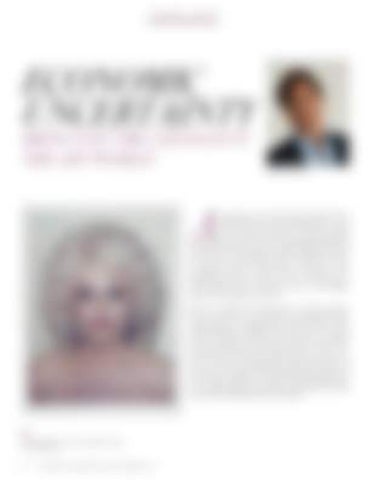F
O
N
A
R
T
ECONOMIC UNCERTAINTY BRINGS OUT BIG CHANGES IN THE ART WORLD
By: James R. Hedges, IV
A
rt is a curious asset class- often viewed as a discretionary expenditure by the world’s wealthiest people. In the 1970’s, 1980’s and even into the 1990’s, the art world was a very insular, small circle of private individuals and collecting institutions. It was a world inhabited by those with a passion for the art who largely amassed remarkable collections over the course of collecting for decades. From time to time, one would read about a collector whose collection was worth extraordinary amounts of money, but the art world was never pedestrianized, and it was always viewed as an insider’s game which required special connections for access to the highest quality investment-grade works of art. However, the 1990’s and early aught’s saw a massive change in the way in which the art world operated. During this period, wealth creation was at the fastest pace in human history. Newly minted millionaires and billionaires wanted in on the art game, and the art market of galleries and auction houses responded with an ample supply of new product to acquire. Aware of the outsized returns that could be achieved in the art world, a new breed of collector entered the market: the speculator: those who felt art was not only something that afforded social status and represented a very high level of achievement and cultivation, but also a world in which one could easily and regularly flip works into an appreciating market and make remarkable returns, which often outpaced traditional investment markets.
ANDY WA RHOL, D OLL Y P A R TO N, 1 9 8 5 , 3.75 X 4.25 IN 68
FON MAGAZINE / SUMMER ISSUE 2020 / FONMagazine.com








